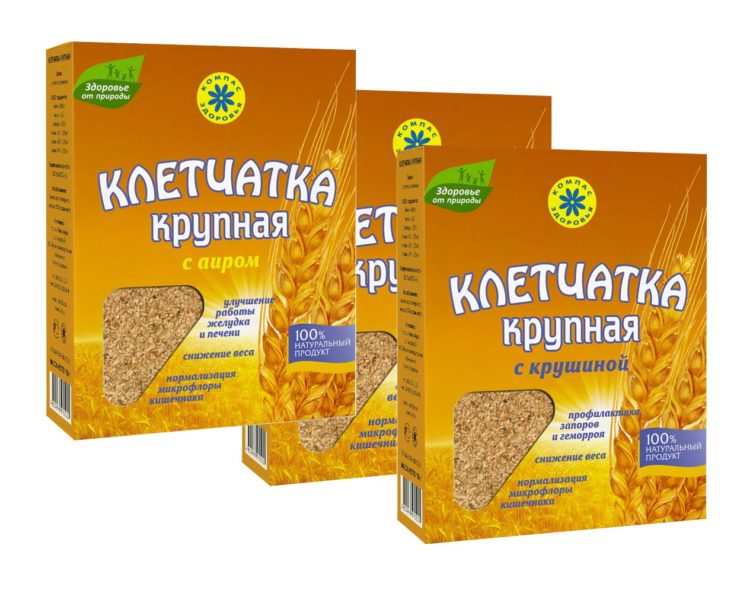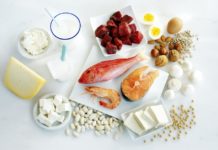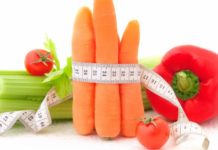The first month after birth is the period of adaptation of the mother and baby to new conditions. The body of a woman is debugging the production of breast milk, the digestive system of the newborn baby adjusts the work of enzymes. The nutrition of a nursing mother in the first month plays an important role in these processes.
Material Content:
The importance of proper nutrition after childbirth
First of all, you need to understand that the term “proper nutrition” does not mean “increased nutrition”. There is a misconception in the mass performance: a nursing mother must eat for two, otherwise there will be no milk. This myth is surprisingly persistent, despite the fact that it contradicts a simple fact: more than poorly fed mothers in poor African countries breastfeed their babies more successfully than well-fed European women.

The amount of food does not affect the production of breast milk. But excess calories quickly form fat deposits in the body of a recently born woman. Of course, this does not mean that you need to starve. But the daily energy value of the diet should not exceed 2500 kcal.
The second misconception to which nursing mothers are exposed: fatty, high-calorie food makes milk fatter. In fact, the fat content, as well as the content of proteins and carbohydrates in breast milk, is determined genetically. The main components of milk the mammary gland produces independently. She also "decides" how much to "put" vitamins, calcium and other elements.
Eaten food does not penetrate into milk unchanged. First, it breaks down in the intestine, is absorbed into the blood in a molecular form, and then the components must pass through the lactocyte barrier. This is the name of the border between the alveoli of the breast and milk itself.
Only some substances can overcome it:
- alcohols;
- ether compounds;
- caffeine and nicotine;
- some drugs;
- certain chemical preservatives, flavors, emulsifiers, etc.
Thus, food only slightly affects the quality of breast milk. Nature arranged the baby to be fed in any conditions. However, proper nutrition plays a huge role in restoring the woman’s body after childbirth. Her body has done a great job and is preparing for a new stage in life. So that breastfeeding does not deplete the mother’s resources and take place without harming her health, special attention should be paid to the preparation of the diet.
The diet for the first three days
The first days after birth are special. They are characterized by the following nuances:
- Lack of true breast milk. In the first 3-5 days after the birth of the baby, the mammary gland produces colostrum - a salty, thick secret that is closer in chemical composition to blood plasma than to milk. It contains very little milk protein, but many globulins and albumin, has a high energy value, forms the immunity of the baby and starts the work of its digestive system.
- Increased permeability of the lactocyte barrier. During this period, cells of the breast alveoli more freely pass various components of the blood into colostrum. The final formation of the barrier occurs within a few days after birth.
- Atony of the intestine of the woman in childbirth. As after an independent birth, and after a cesarean section, all women face constipation, which is also taken into account in the preparation of the diet.
Based on these features, the following requirements are made for nutrition in the first days after childbirth: it should be light, fractional, liquid and strictly controlled in microbiological and chemical terms.

As a rule, during this period, women are in maternity hospitals. Diet tables in them are organized taking into account all the requirements. Therefore, the main recommendations relate to products brought by caring relatives. Lists of allowed and forbidden are always posted in maternity hospitals:
| Allowed Products | Prohibited Products |
|---|---|
| • fermented milk products without dyes, flavors and fruit additives (kefir, fermented baked milk, cottage cheese, sour cream, hard mild cheese); • bananas and baked green apples; • dried prunes; • bran bread; •oatmeal; • boiled or steam lean meat; • boiled or steamed low-fat fish; • boiled, stewed or steamed vegetables; • lean soups; • still mineral water; • tea without additives. | • fruit juices and berry compotes; •sausages; • sweet fruit yoghurts and curds; • sweet rolls, chocolate, sweets, cakes and other confectionery products; • condensed milk, jams, jams, honey; • citrus fruits, raspberries, grapes, currants, apricots, red apples, cherries, cherries, kiwis, mangoes, watermelons, melons; • tomatoes, sauerkraut, pickles, mushrooms; • canned food, spicy and smoked products; • nuts and dried apricots; • eggs and chicken; • fresh milk, cream; • coffee, kvass and carbonated drinks; • mayonnaise, ketchup and other sauces; •alcohol. |
The diet of a woman in labor these days should fulfill two tasks: to start the work of her intestines and to prevent the penetration of potential allergens and harmful substances through the immature lactocyte barrier.
It will be good if in the "anxious suitcase" with which the woman goes to the hospital, there is a box of dry fiber. It can be taken from the first day, 2 tablespoons per day, washed down with water. The amount of fluid consumed should be 1.5-2 liters per day.

Vitamin complexes and dietary supplements after childbirth are taken only as directed by a doctor.
The end of the first week after birth
By the end of the first week after childbirth, nutrition is already on the shoulders of the woman herself.At this time, the mammary glands begin to produce transitional milk. They become tight, often painful. And here, contrary to conventional wisdom, it is important to drink liquids very dosed. If there is too much milk, it is better to limit yourself to 1.5 liters per day and more often put the baby to the chest.

As for food, during this period you should adhere to the same regimen and diet that was in the hospital. When mothers return home, they often encounter problems such as colic or diathesis in infants. This is due precisely to the fact that in a home environment women give themselves free rein and begin to eat everything that “the body requires”.
Of course, Mom’s diet is just one of many factors that provoke abdominal cramps or allergic reactions in infants. And yet, it makes sense to think about the baby's immature enzyme system before putting something into your mouth.
The menu of a nursing mother in the first month
For 2-3 weeks after the birth of the baby comes "real" milk. From this moment, lactation can be considered mature and expand the diet.
The menu of a nursing mother in the first month after birth should include 5 meals:
| Eating | Menu Options |
|---|---|
| First breakfast | • Any porridge without milk with the addition of linseed, hemp or sunflower oil. A piece of hard cheese. Weak tea without sugar. • Low-fat cottage cheese with sour cream. Crouton with grated cheese. A cup of rosehip decoction without sugar. • Steamed cauliflower or broccoli with grated cheese and vegetable oil. Compote of green apples and prunes with dried croutons. • Spaghetti with grated cheese, without fatty sauces and butter. Weak tea without sugar. |
| Lunch | • A glass of kefir or fermented baked milk with the addition of 1 tablespoon of fiber. • A baked apple or pear without honey and sugar. • Fresh banana. |
| Dinner | • Light fish soup. Vegetable stew. Weak tea without sugar. • Vegetable soup puree. Baked veal or lean pork steak. Compote. • Meatball soup. Baked potatoes with dill and sour cream. Weak tea. |
| High tea | Any of the options for lunch and dried toast. |
| Dinner | • Dumplings or dumplings with sour cream. • Steamed fish with a salad of grated carrots, seeds and sour cream. • Boiled beef or lean pork with pumpkin puree or a salad of greens. |
Of course, the mother of a newborn baby has very little time to prepare healthy and varied dishes for herself.

Therefore, it makes sense even before giving birth to worry about a reasonable distribution of forces and time management:
- purchase a slow cooker;
- make a stock of portioned sliced frozen vegetables and meat products;
- purchase vacuum containers for storing finished products in the refrigerator;
- learn how to use oven resources.
It is also important to arrange with households that they temporarily suffer without drowsiness, or connect to the chores of the kitchen.
Diet restrictions
Until the end of the first month after giving birth, a nursing mother will have to limit herself in some ways:
| Strictly Prohibited Products | Products requiring caution |
|---|---|
| •alcohol; • sweets, honey, chocolate and sugar; • carbonated drinks and coffee; • canned food and marinades; •fast food; •sausages; • spicy and smoked dishes; • mayonnaise and ketchup; •citrus. | • legumes, white cabbage, beets, tomatoes, eggplant; • chicken and eggs; • whole milk, baked milk and cream; •fat meat; •butter; • mushrooms; • fresh onions and garlic; • fresh yeast bread; • caviar and red fish. |
Moms prone to allergies to a particular product, you must definitely exclude it from the diet. Allergies are often inherited.
List of allowed products

Based on the foregoing, you can make a list of products that are guaranteed to benefit the nursing mother and not harm the baby:
- Fruits: green apples, pears, bananas.
- Dried fruits: prunes.
- Vegetables: potatoes, carrots, pumpkin, cucumbers, zucchini.
- Greens: dill, parsley, spinach, salad.
- Sour-milk products: kefir, fermented baked milk, sour cream, yogurt without additives, unsalted and mild hard cheese, soft goat cheese.
- Vegetable oils: sunflower, linseed, hemp, olive.
- Cereals: oat, buckwheat, brown rice, pearl barley, barley.
- Meat: veal, lean pork.
- White fish: cod, catfish, hake, flounder, mackerel.
If it is difficult for mother to refuse sweets, it is acceptable to use natural fructose as a sweetener. Bread is best consumed in dried form, and pasta is made from durum wheat.
When should you follow a strict diet?
In some cases, a special strict diet for a nursing mother is required.
They are associated with the presence of the following pathologies in infants:
- digestive and absorption disorders: cystic fibrosis, celiac disease, exudative enteropathy, etc .;
- early manifestations of allergic reactions: diathesis, atopic dermatitis;
- allergic burdened heredity: a history of close relatives of bronchial asthma, hay fever, allergic rhinitis, food allergies, etc.
Read also: perioral dermatitis
In such situations, the menu for a nursing mother is developed individually by a pediatrician, gastroenterologist or allergist.
In all other cases, the severity of the diet is gradually reduced, starting from the second month after childbirth. As a rule, by the six-month-old age of the baby, the mother returns to her usual diet, restricting only strictly forbidden foods.












